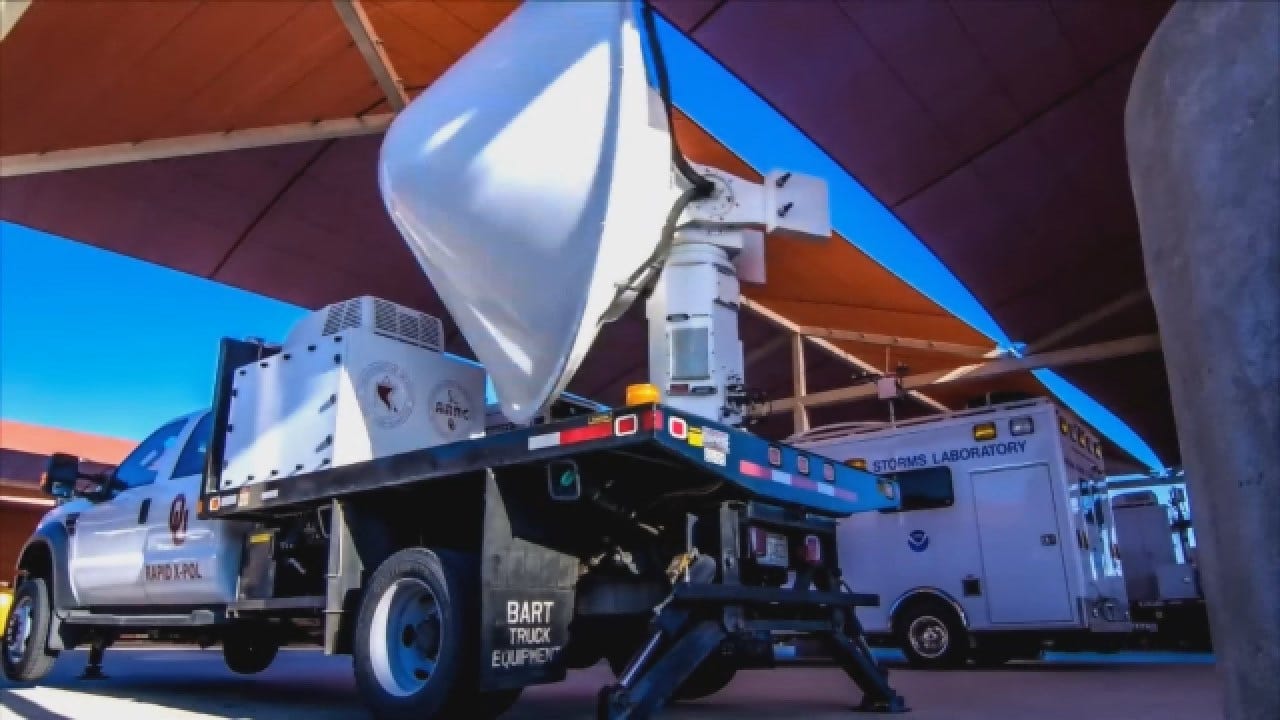OU Radar Program Builds Hi-Tech Radar
Researchers at the University of Oklahoma started building mobile radars a decade ago for weather research. Now, the technology has gotten so advanced, the newest radar under construction can do more than predict storms. Inside the Radar Innovations Lab aThursday, March 7th 2019, 10:58 pm
Researchers at the University of Oklahoma started building mobile radars a decade ago for weather research. Now, the technology has gotten so advanced, the newest radar under construction can do more than predict storms.
Inside the Radar Innovations Lab at OU, some of the brightest minds are at work.
"We're trying to come up with ways to better predict tornado formations, so we need to understand why tornadoes form," said David Bodine, Research Scientist at the Radar Innovations Lab.
The lab's team of more than a 100 engineers, professors, meteorologists and students are doing that with their mobile radars.
"It's exciting, you get to actually see the storm and collect the data," Bodine said.
Mounted on the back of a truck, the team drives the radar into the field and sets it up, ahead of the storm.
"You have that reference point of see this beautiful thunderstorm and can relate what you see visually with what you see in the data," he said.
The team has collected data on 30-40 super cells and 15-20 tornadoes, including the 2013 tornadoes in El Reno and Moore.
"We had a dual polarization radar scan the storm every 20 seconds at one height, so we could see the evolution of the tornado throughout its full lifecycle," said Bodine.
Now the team is taking the technology further with HORUS, a mobile radar testbed funded in part by a $5.4 million grant by the U.S. Department of Defense.
"It's really truly digital, every single element," said Mark Yeary, Professor of Electrical and Computer Engineering. "A radar like this relies a lot on what we call software defined radio technology. It's all of the technology that probably goes into your cellphone."
Inside a testing chamber, Yeary showed off the flat panel face of HORUS.
"With this technology, the antenna will remain stationary, however, it will electronically beam steer into the area of interest," he said.
When complete, the U.S. Navy will use HORUS in its many missions for public safety.
"The Navy got interested in what we are doing so now the Army is interested and so it's kind of exploding, the interest is exploding," said Robert Palmer, Executive Director at the Advanced Radar Research Center.
The plan is to use the radar for weather monitoring and air traffic surveillance and control.
"It's not ready yet," said Palmer. "We are designing all the electronics and mechanical parts but we're about a year away from actually seeing it out in the parking lot."
And eventually in action across Oklahoma and the United States.
More Like This
March 7th, 2019
March 18th, 2019
March 18th, 2019
March 18th, 2019
Top Headlines
June 8th, 2025
June 8th, 2025









